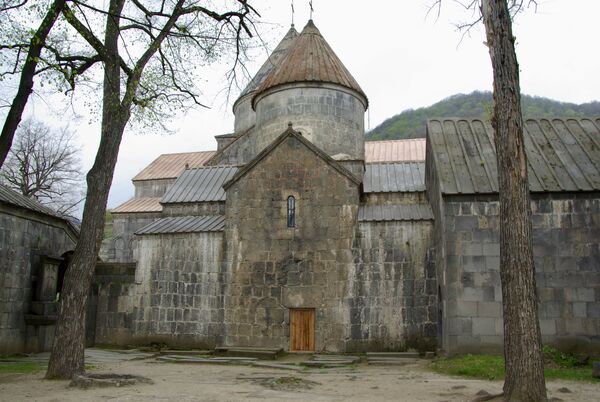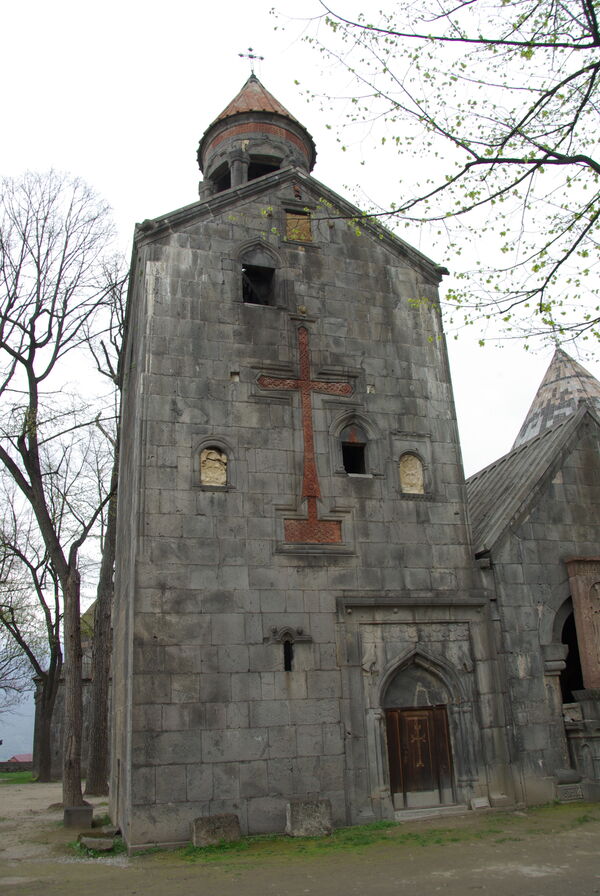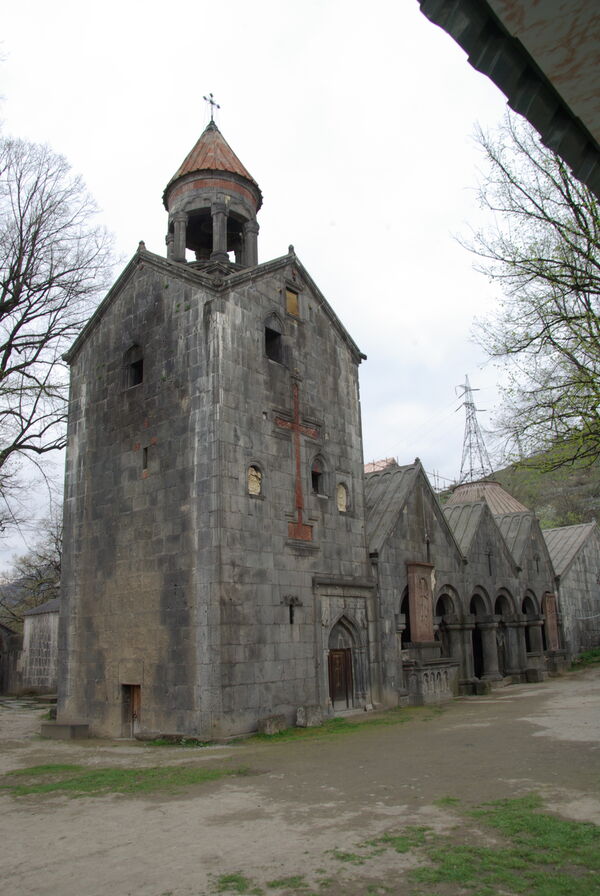 Sanahin Monastery
Sanahin Monastery
3 images 1 contributors Shoot with care
Nigel Shaw
Shoot with care
About this spot
Sanahin Monastery consists of two churches, dedicated to Holy Mother of God and Saint Saviour; several gavits (narthexes); a belfry; a chapel dedicated to St Gregory the Illuminator; a matenadaran (manuscript library); and an auditorium. The Mausoleum of the Zakarid family members and many khatchkars also form part of the monastic complex. Outside the monastery’s walls are several chapels, a fountain, and the twelfth-century bridge of Sanahin, built on the river of Debed by Queen Vaneni.
The oldest building is the Church of the Holy Mother of God, built in 928-944 during the reign of King Abas I Bagratid. The main church is dedicated to Saint Saviour and was built during the years 957-966 under the patronage of Queen Xosrovanuyš, the spouse of King Ašot III Bagratid (953-977). The sculptured portrait on the eastern wall of the church represents the patron’s sons, Gurgen (Kiwrikē) and Smbat, holding in their hands the model of the church. The corresponding inscription reads: “King Kiwrikē, King Smbat”. Given that during the time of the church’s construction Smbat and Gurgen were still children and that the inscription is not placed symmetrically within the frame, it is possible that it was added later, when the Bagratid brothers were already holding their royal titles: Smbat as king of Armenia, and Gurgen as subordinate king of Tašir-Joraget. At Haghbat Monastery, commissioned two decades later by the same royal family, another relief portrait of the two brothers appears, representing them and their new political status, expressed through their robes and headgear.
In 1061, a chapel was built dedicated to St Gregory the Illuminator. The small chapel has a circular shape from the exterior, but, in its interior, has the traditional cross-shape plan. Close to the Chapel of St Gregory, Hranuš, the daughter of King Davit Anhołin of Tašir-Joraget (989-1050), built the matenadaran of Sanahin, one of the most famous manuscript libraries of medieval Armenia, in 1063. It is a rectangular building with an unusual vaulting system. Along the interior walls, between richly decorated columns, are holes of different shapes where the books were kept.
The three-level belfry was also built in the thirteenth century.
The oldest building is the Church of the Holy Mother of God, built in 928-944 during the reign of King Abas I Bagratid. The main church is dedicated to Saint Saviour and was built during the years 957-966 under the patronage of Queen Xosrovanuyš, the spouse of King Ašot III Bagratid (953-977). The sculptured portrait on the eastern wall of the church represents the patron’s sons, Gurgen (Kiwrikē) and Smbat, holding in their hands the model of the church. The corresponding inscription reads: “King Kiwrikē, King Smbat”. Given that during the time of the church’s construction Smbat and Gurgen were still children and that the inscription is not placed symmetrically within the frame, it is possible that it was added later, when the Bagratid brothers were already holding their royal titles: Smbat as king of Armenia, and Gurgen as subordinate king of Tašir-Joraget. At Haghbat Monastery, commissioned two decades later by the same royal family, another relief portrait of the two brothers appears, representing them and their new political status, expressed through their robes and headgear.
In 1061, a chapel was built dedicated to St Gregory the Illuminator. The small chapel has a circular shape from the exterior, but, in its interior, has the traditional cross-shape plan. Close to the Chapel of St Gregory, Hranuš, the daughter of King Davit Anhołin of Tašir-Joraget (989-1050), built the matenadaran of Sanahin, one of the most famous manuscript libraries of medieval Armenia, in 1063. It is a rectangular building with an unusual vaulting system. Along the interior walls, between richly decorated columns, are holes of different shapes where the books were kept.
The three-level belfry was also built in the thirteenth century.
Join PhotoHound to learn how, where and when to capture amazing photos here
- Know the best times, seasons & shooting conditions
- Detailed directions - maps, co-ordinates and directions
- Know how to get there - where to park or how to reach there using public transport
- Browse inspirational photos and learn how they were taken - see the EXIF details
- Bookmark your favourite spots for future reference
- Know exactly when to shoot for beautiful photographs - sunrise, sunset, blue hour and astrophotography
- Detailed, 7-day weather forecast at this location
- Share your images with like-minded travel photographers




